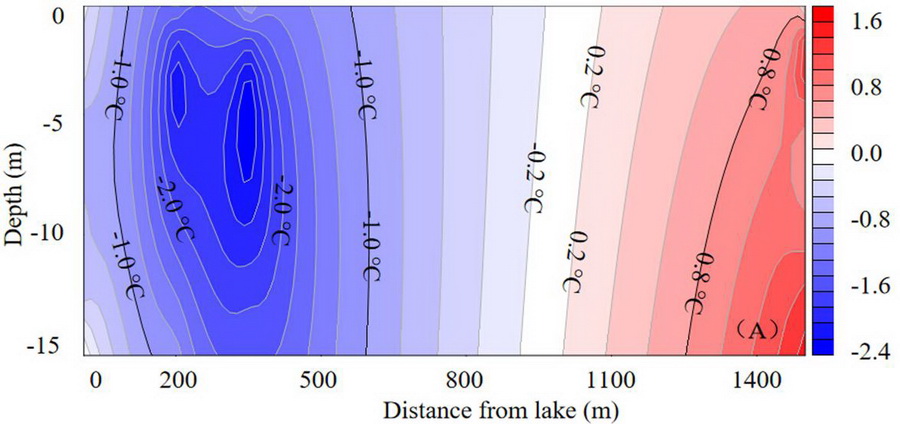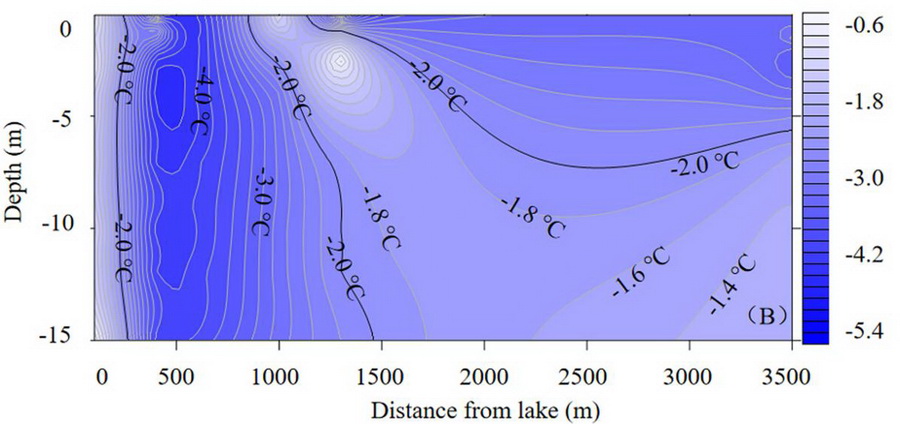Study Reveals Positive Impact of Large Lakes on Permafrost Development on Qinghai-Tibet Plateau
Updatetime:2023-03-20From:
【Enlarge】【Reduce】
The Qinghai-Tibet Plateau (QTP) has the largest area of permafrost in the low- and mid-latitude regions of the world, and there are a large number of large-scale lakes in the permafrost area.
However, few studies have been carried out to explore how these large-scale lakes affect the permafrost distribution.
Recently, researchers from the Northwest Institute of Eco-Environment and Resources (NIEER) of the Chinese Academy of Sciences (CAS) have revealed that these large lakes have a positive effect on the development of permafrost in adjacent areas, rather than leading to the degradation of permafrost.
This study was published in Journal of Mountain Science on March 13.
Monitoring data from Longmu Co Lake, Zonag Lake and Yanhu Lake demonstrated that the permafrost temperature and the ice content of the permafrost around these lakes were closely related with the distance to the lakes.
Although the lake has a heating effect on the surrounding permafrost, the existence of the lake provides favorable conditions for the development of permafrost due to the enrichment of soil water content around the lake.
Moreover, there is an ice-rich permafrost zone around the lake, and the temperature of the permafrost in this area is significantly lower than that far away from the lake.
In the QTP, the effect of the lakes on the surrounding permafrost simply reflects the effect of the soil water content on the distribution of the permafrost in the plateau region. The researchers suggested that the arid climate conditions in the permafrost regions of the QTP are the main reason for these phenomena.


The ground temperature contour maps of the permafrost at the north (A) and south (B) of Longmu Co Lake. (Image by XIE Changwei)
Contact:
XIE Changwei
E-mail: xiecw@lzb.ac.cn
Appendix




